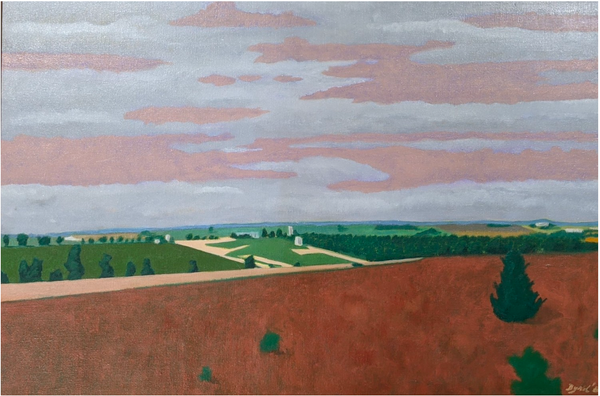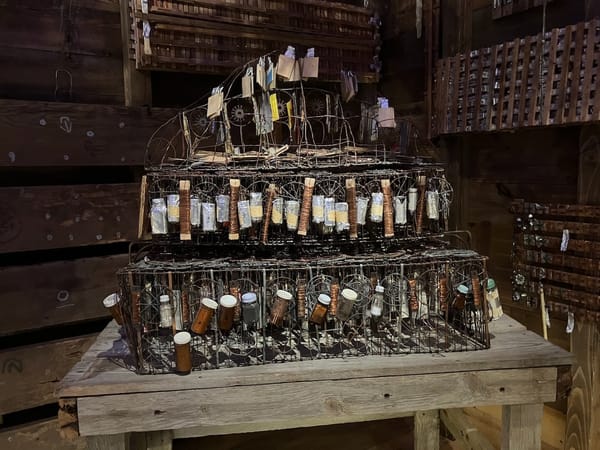"Unraveled. Restructured. Revealed.: Where Contemporary Art and Diverse Perspectives Intersect" is a powerful exhibition, and I hope for more.
by Lynnea Lee
In the colonial America that we live in, we are constantly hearing the same narrative over and over: the white man’s narrative. We hear and internalize this colonized white perspective from what we learn and read in K-12 schooling, to what we see and hear in the media, to the posters we walk and drive by. It is dangerous to hear this same narrative throughout our life. How do we grow, learn, and expand if we are not intentionally seeking out multiple narratives? Learning from people of various backgrounds gives us the beauty of different perspectives. This allows us to develop understanding and empathy. It also encourages us to question our beliefs, question our way of life, and question our own perspectives. It is also just the right thing to do.
The current exhibition at the Trout Museum of Art (TMA), Unraveled. Restructured. Revealed.: Where Contemporary Art and Diverse Perspectives Intersect, provides an opportunity to view empowering art while learning about insightful artists from diverse backgrounds. Each art piece is intentional, and I appreciate the various mediums used. Meaning and understanding can be derived from viewing the art pieces alone. However, it is essential to read the artist statements in addition to viewing. These artist statements allow a deeper understanding of who each artist is and why they created what they did. This exhibit takes time to experience. I saw a couple who visited for only five minutes. I am certain they did not leave the museum with an understanding of the artists, their experiences, or their art. To be fully immersed in the art and the perspectives of the artists takes time. We have to allow ourselves the time. We also owe it to the artists.
As a HMoob biracial woman, educator, and creative, it felt welcoming and inviting to walk in a space that was curated specifically with and for marginalized folks. The sad and unfortunate truth is that there are not many spaces (especially in Appleton, Wisconsin) where people of different identities come together to share and learn. So, this exhibit felt like a breath of fresh air. At the same time, I would argue that the space it was held in, the Trout Museum of Art (TMA), is inaccessible to some people.
To begin with, it’s a $15 annual membership fee to view the show. TMA claims this as “low-cost,” which it is compared to their past fee. And I understand that this membership fee allows people unlimited access to exhibitions, but there are people who cannot afford this amount. $15 is just simply too much for some people. Even as I write this, I think of my mother. She is considered low-income, and she technically could pay the $15. But if I invited her to this show, I know she would say “hell no!” because of the price. I think a lot of people share this view. Shouldn’t these people - those who are hesitant to spend money on art - be the people who museums should be targeting? Isn’t the point to promote art in the community? And while there is an online exhibition that can be viewed for free, artist statements are not on display and some people do not have easy access to the internet or a device. If the art is really for the public, why is there this barrier? Why not offer actually reduced membership prices or free membership prices to those who are restricted by income?
While visiting the TMA, I talked to some of the people who were working there. One person mentioned how it was important to seek out a guest curator for this show - since they and the people who are a part of the Trout are white and “wouldn’t know where to begin”. While I think it is critical they realized that a show featuring artists from marginalized communities should also have a curator who is from a marginalized community, it also makes me question why the Trout doesn’t hire a person of color within the museum itself? And maybe there is a person of color who is on the board and staff at the TMA, but based on what I heard and experienced, I believe there is not. While I think it is special to reach out and have a guest curator, they also need to reflect on their own board and staff and question why it is so white. If there is a predominantly white space, it is going to attract predominantly white people. That is not accessibility. That is not inclusion. This show is about diverse perspectives intersecting. I agree that this is happening on the walls of the gallery. But I question if it is happening otherwise.
I want to end by saying that Tyanna J. Buie did a wonderful job curating the show. She and all of the sixty-one artists should be proud! As someone who is marginalized, it honestly felt uplifting to be immersed in this gallery of artists. My hope is that exhibits truly become accessible to all. I also hope that marginalized folks are continuously highlighted throughout every exhibit and not for just one exhibit. I encourage everyone to take the time to view the art, learn about the artists, and grow from it.




